These Native Goods: Sustainability Starts With How We Shop
Earth Day. Los Angeles, California. – Meet Chandra Fox, founder of These Native Goods, a directory of companies that manufacture products ethically and locally, to encourage sustainable shopping. She was propelled into curating this very special website while confronting her long-term suspicion that mass consumerism is nothing but dangerous.
FMD: We absolutely love your site. Not only because of the amazing variety of brands, and beautiful imagery, but also what it stands for. How did you put These Native Goods together?
Chandra: I was doing a lot of research looking for ethical brands, trying to find products I felt good buying. Every time I was in need of something new I spent hours, sometimes days, looking for an ethically made version. I have the worst memory, so I started compiling a list of brands to help me remember the good ones and to save time. I also included notes about what the company made and where it was manufactured. Then I figured this could be useful for other people. Right around the time I was starting to put it all together, was when I saw the documentary The True Cost. It mostly focuses on manufacturing in the fashion industry and talks about the Rana Plaza collapse where over 1100 people were killed. A bunch of big companies in the USA outsourced there. People had reported that the building wasn’t up to code and that it wasn’t safe. But, all these safety regulations went ignored, and people lost their lives.
The documentary also addresses the amount of waste that goes back into the environment. Both from producing clothes and also from overproduction. People are going through clothes like, “oh buy that five dollar shirt from Forever 21. Who cares if you only wear it once.” Disposable fashion now seems to be the mindset of the majority of the people in the US. But, it’s not a very good mindset. So I created the directory to give people an alternative. I wanted These Native Goods to be USA based not only to support our local markets but also because we are generally more strict with our safety regulations in the work place and protecting the workers.
These Native Goods is still a work in progress. There’s a lot of challenges with it too because US made products are always more expensive, so it’s not something that can fit into everybody’s budget. For some people, it can work if they just change the way they’re shopping. For instance, a lot of people buy whole bags of fast fashion a few times a month. If you add up what they’re spending, they could buy one or two nice pieces that would last them longer, for the same amount of money. But for other people, no matter how much they save on their shopping, they’re not going to be able to afford to spend $400 on a piece all at once.
A post shared by Chandra Fox (@these.native.goods) on
A post shared by Chandra Fox (@these.native.goods) on
FMD: Are there any ways we can shop in a sustainable way without having to spend hundreds of dollars? We know that many models starting out don’t always have a lot of money, but are expected have a variety clothing, accessories and beauty products. They find themselves trapped in fast fashion.
Chandra: Yeah, I remember having to go to a casting and the requirement was to wear a short black dress. I didn’t have one that was figure flattering, so I grabbed one real quick from Forever 21. I’m always trying to find ways to make it work for everyone. One I talk about on These Native Goods is buying second-hand, and for me, that’s something that I’ve always loved. I also love shopping vintage. You get amazing deals. I’ve actually bought second-hand pieces from brands that are on my site, for a fraction of the price through E-Bay or Instagram.
Some ethical labels do have lower price points than others, the more detail involved in the pattern making and construction of the garment the more costly it will be. Additionally, certain sustainable fabrics or higher quality materials can bring up the prices too. But it is possible to find some ethical brands in a more affordable price range.
FMD: Can you recommend any brands that you think would be good for models to check out?
Chandra: Yes, definitely. Groceries Apparel does really simple things like t-shirts and tank tops that would be perfect for castings. Just pair with some flattering jeans or a cute skirt. Also, Flynn Skye . There are quite a few other lines in the directory that do really great basics as well.
I think for models the natural beauty thing is also really important because taking care of your skin is a priority. Although bigger skincare brands always promise no wrinkles, and other anti-aging miracles, I really think that aside from eating right, the best thing for your skin is to use products that contain natural ingredients, and they won’t ruin your skin over time. I have a couple of cosmetic lines in the directory, like RMS Beauty. At the moment I’m working on a new feature with a brand called Vapour Beauty, that does foundations, lip colors, and other cosmetics too. And, there’s another one called Plain Jane that does really good mascara. Although these brands are more expensive than Walgreens, I feel that investing in your skin is vital when you are in the modeling industry.
FMD: Should we be skeptical about products claiming to be all natural?
Chandra: That is a problem in the marketing world because there are companies that claim they are all-natural but when you actually look at the ingredients they’re not. My cousin has been working as a natural skincare esthetician for over 10 years, and a lot of times when I’m working with a new company and come across ingredients I’m not familiar with I’ll run them by her. Is it safe? Is it necessary? Would you use something like this? She’s a great person to bounce things off because of that.
There is also a website, Environmental Working Group, that has a section called Skin Deep. You can enter any ingredient to get a breakdown of what it is and the possible risks of toxicity. They also give a rating from one through ten, one being no risk at all, and ten being “I would not use this.” But, you also have to consider the fact that one ingredient can be derived from multiple things. Depending on if it’s man-made, or if it came from a plant, the safety rating on the EWG site could be different. Additionally, it is also dependent on how much of an ingredient is used. For example, if a preservative is used in small quantities to keep the product from molding, it is actually less dangerous than applying a product that has mold in it. But if there is a high amount used, then the toxicity rating is increased. So, there’s a lot of variables. But it’s a great database to give you an idea.
FMD: Do you have any other tips on how to find cheaper ethically made products?
Chandra: Yes, there are some other tricks like for instance, here in LA, a lot of brands do sample sales. Sometimes a whole group of them will host a sample sale together. I would definitely recommend following labels that you like, as they often post these events. There may be long lines, which can be a pain but worth it if it’s a style that you love. I know Reformation does them, and I think that’s a brand models would like because it’s very on trend right now. It’s very figure fitting. Watch for holiday sales too. Even these smaller brands host online Black Friday and after-holiday sales.
Denim Day: Wear Jeans With a Purpose.
Almost everyone owns a pair of jeans, but do you know that on 25thof April by wearing them you also make a strong social statement?
(denimdayinfo.org)
Jeans have come a very long way from their utilitarian beginnings. In the small gold rush town of San Francisco, during the 19thcentury, Levis Strauss and Jacob Davis added pockets and rivets to the hard-wearing denim pants. Patenting and launching them into the jeans we know today.
During the 1950s, jeans became the symbol of American teenage rebels, and by the 1970s they were the uniform of youth. In the 1980s, many advertisement campaigns took place. Calvin Klein hired the young Brooke Shields and world-renowned photographer, Richard Avedon for a series of dynamic stills. Throughout the following years, many denim brands appeared. Jeans started as men’s workwear, and today they can be matched with a pair of high heels and look more feminine than wearing a mini skirt.
But, who could have ever thought that a pair of jeans might trigger a whole movement of sexual violence prevention?
Everything started back in 1992 in Italy. An 18-year-old girl was picked up by her 45-year-old driving instructor for her very first lesson. Unfortunately, her excitement ended in a total nightmare. Not only did the instructor rape her but he also threatened that if she told anyone what had happened, he would kill her. When the girl returned home, she told her parents about the harrowing attack, and they pressed charges against him. The driving instructor was prosecuted and sentenced to jail for rape.
But in 1998, he appealed the sentence and made it all the way to the Italian Supreme Court. There the judges decided to release him and accused the victim of consensual sex, since wearing very tight jeans, it would be difficult for the instructor to remove them by himself. The next day, women who were in the Italian Parliament protested by wearing jeans at work, and held signs of “Jeans: An Alibi for Rape.” It was only a matter of days for the news to travel to the other side of the world, in California where the Senate and Assembly followed suit. In Los Angeles in April 1999, the Executive Director of Peace Over Violence made Denim Day an annual event.
Denim Day is observed each year in April. People of all races and genders wear jeans as a symbol to raise awareness of rape and sexual assault. It paved the way for initiatives such as #metoo and #timesup. These are important social issues that we should be well-informed about, so we can stand up against such salacious and provocative actions.
For once more, a fashion piece with such a long and humble history is helping raise awareness for a serious social problem and has become a symbol of a whole movement. So, every time you wear a pair of jeans, wear them with purpose.
Chargebacks: What Are They And Why Do Models Have Them?
When your agency issues your checks, based on the compensation received from your clients, you will notice that there are deductions. These deductions are known as “chargebacks.”
Chargebacks are advances the agency makes on your behalf, which could include:
- Portfolios
- Prints.
- Comp cards.
- Agency promotional packages.
- Test shoots.
- Website maintenance fee.
- Airline tickets.
- Hotels.
- Model Apartments
- Car Service.
- Courier fees.
When your client requires you to travel for a job, or another agency invites you to work in their market, the agency may advance the cost of the flight and accommodation. You should make sure to keep track of all the advanced expenses so that you have a record to compare to the deductions made from your check. The accounting department in any agency, upon request, will give you a list of your chargebacks.
In the event that your contract is not renewed or is terminated by your agency, any remaining chargebacks will be due and payable at that time.
As in any career, your investment, whether it is in promotional materials or travel to different markets, enhances your ability to become a successful model.
Don’t forget to consult your accountant to find out which chargebacks, if any, are tax deductible.
Fashion Photography Power Duos
The most influential photography couples of the fashion industry right now.
photo collage by Katerina Stamatopoulou, 2018.
Fashion photography, whether in print or online, will always capture humans’ attention and create emotions. Since its earliest days and the invention of photography at the beginning of the 19thcentury, fashion photography expressed the photographer’s vision about style, attitude, makeup, story of the subjects, lifestyle and in this way it attracted the attention of the viewers.
During its long history, there have been many photographers who have served this creative means of fashion as art. From legends like Horst P. Horst and Cecil Beaton to Helmut Newton and Guy Bourdin who inspired more recent ones like Steven Meisel and Peter Lindbergh.
But, apart from the solo artists of fashion photography, there are also some couples who, through their creative mood and love for this magical world, create unique photos together that leave their mark. Such, photography couples are the ‘Power Duos’ of Fashion Photography.
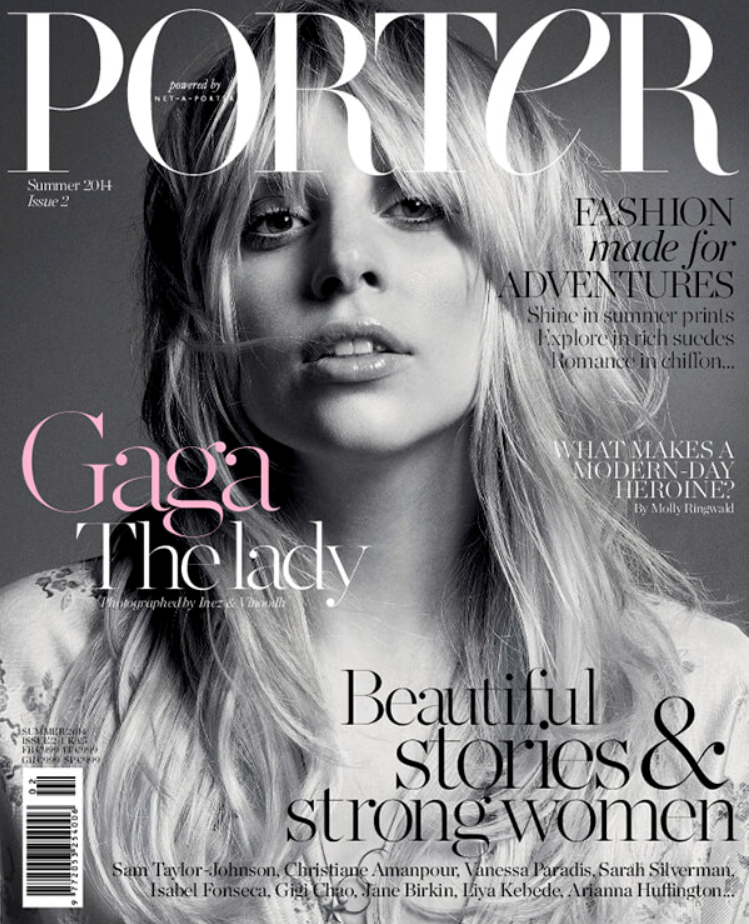
PORTER magazine, Issue 2, 2014 (inezandvinoodh.com)
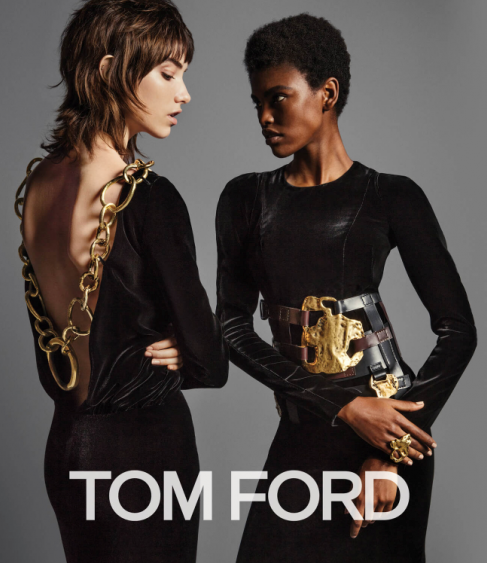
TOM FORD RTW, FW2016 (inezandvinoodh.com)
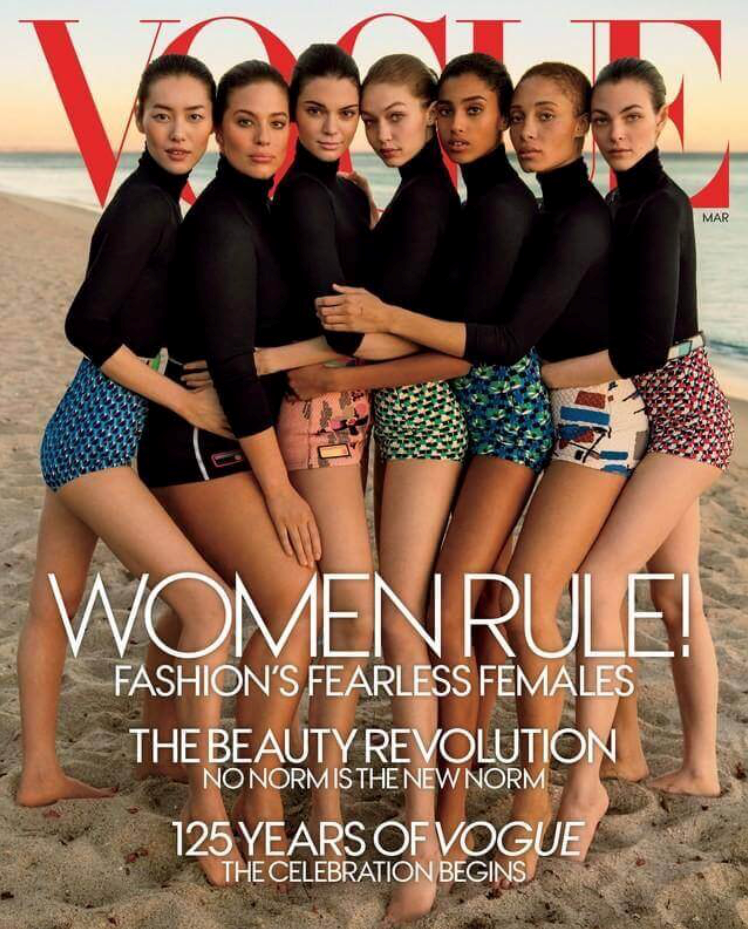
VOGUE March 2017 (inezandvinoodh.com)
Inez & Vinoodh
Inez van Lamsweerde and Vinoodh Matadin have been working together since 1986. The power duo from the Netherlands met as students at the Amsterdam Fashion Academy in the 1980s. They collaborated for the first time when Matadin, then fashion designer, was looking for a photographer for his lookbook. From then on, they not only became photographic partners, but they also became partners in life.
They have been digital photography pioneers, and they have invented their own personal style. YSL, Balmain, Balenciaga, Givenchy, Jean-Paul Gaultier, and many other houses have collaborated with them for their campaigns. Their award-winning work appears in countless fashion magazines; Vogue, Vogue Italia, W, Visionaire, Vanity Fair, and Harper’s Bazaar to name a few.
.
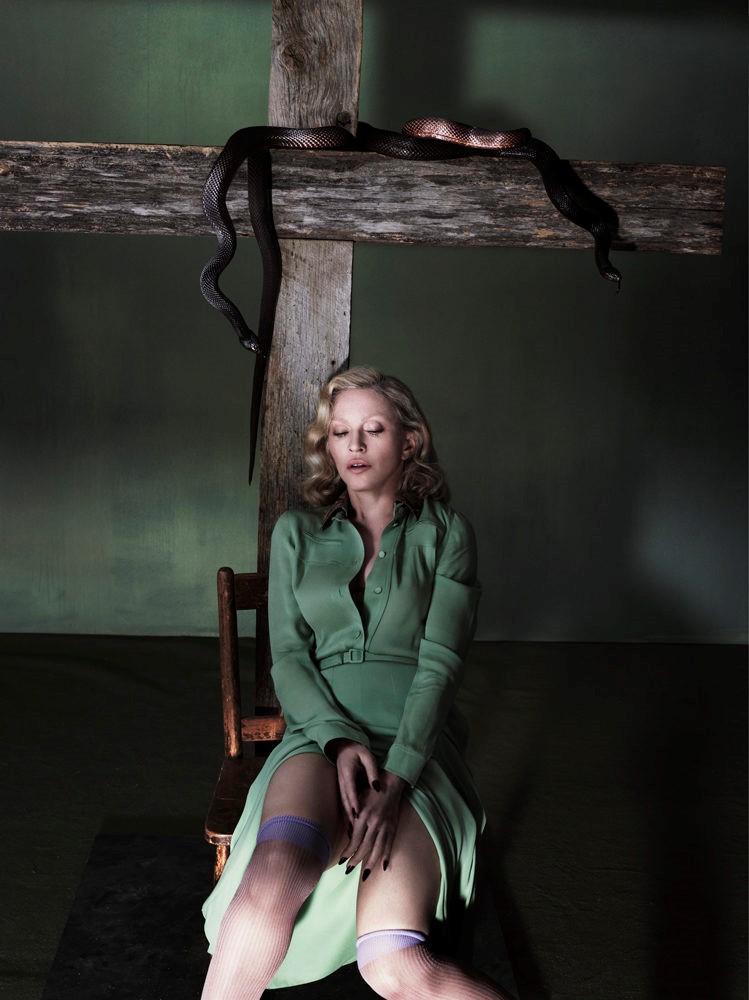
Mert Alas, INTERVIEW magazine, 2014 (interviewmagazine.com)
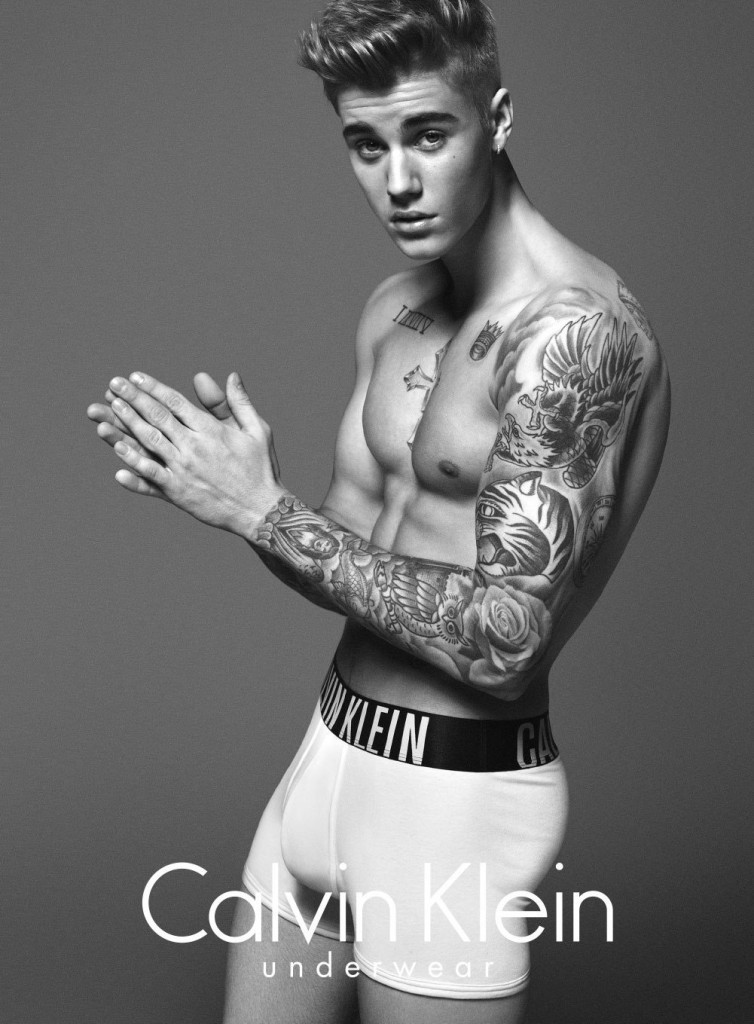
Mert & Marcus, Calvin Klein Underwear, 2015.
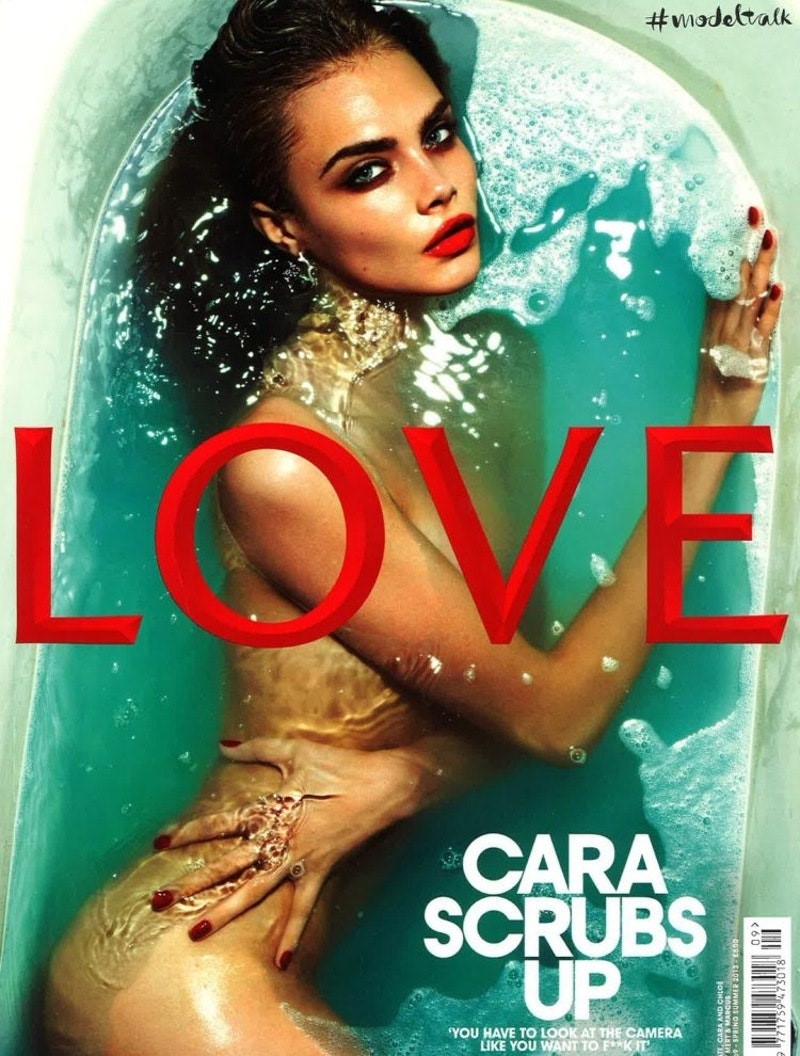
Mert & Marcus, LOVE magazine, 2013 (thelovemagazine.co.uk)
Mert & Marcus
Born in the same year, but in different countries with very different cultures. Mert Alas was born in Istanbul, Turkey, and Marcus Piggott was born in Wales, UK.
They first met in 1994 in England while Piggott’s was a photographer’s assistant and Alas was a fashion model. They worked together a couple of times, and in 1999 they decided to join forces.
The strong use of color brought by Alas’s Turkish heritage and Piggott’s expertise in art and antiques create a unique, highly polished, hyperreal fantasy outcome. They have worked for numerous fashion and beauty houses such as Lancome, Missoni, and Fendi. Also, Vogue Paris, Love Magazine, and The Gentlewoman are some of the magazines that have hosted many of Mert and Marcus’ photos on their pages.
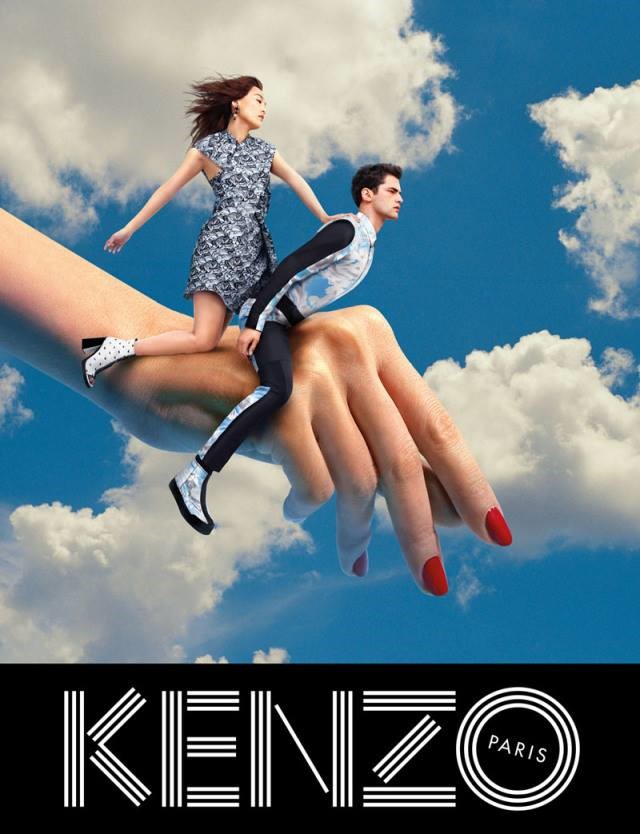
Cattelan & Ferrari, KENZO FW2013 (toiletpapermagine.org)
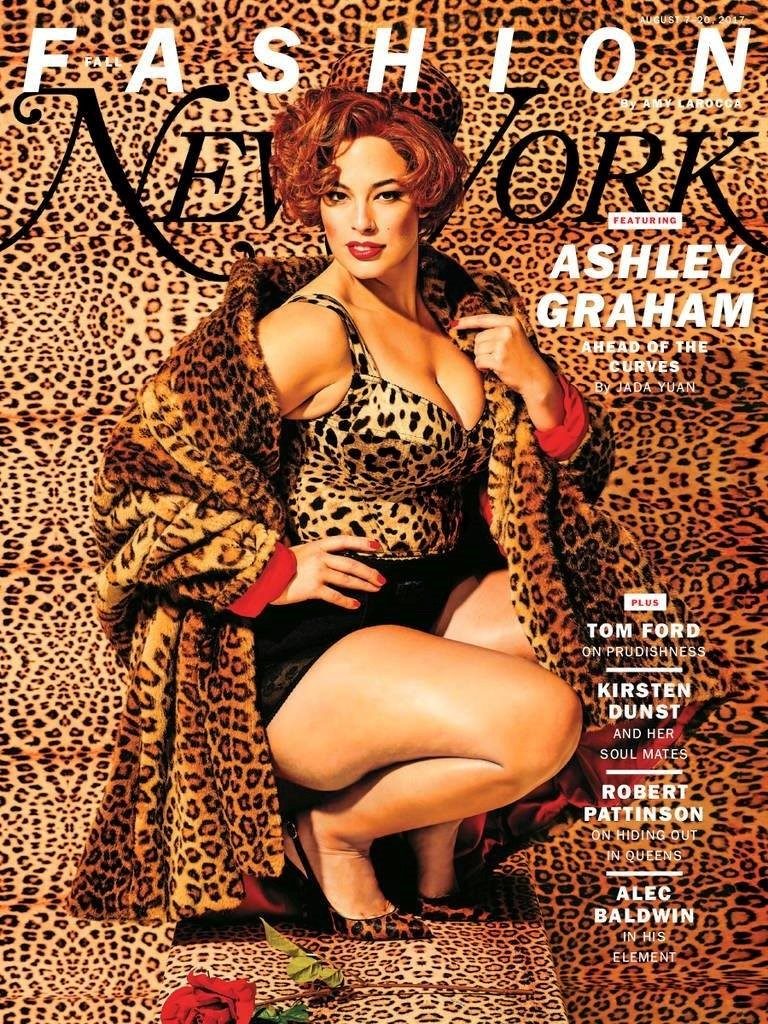
Cattelan & Ferrari, NEW YORK magazine, August 2017 (toiletpapermagazine.org)
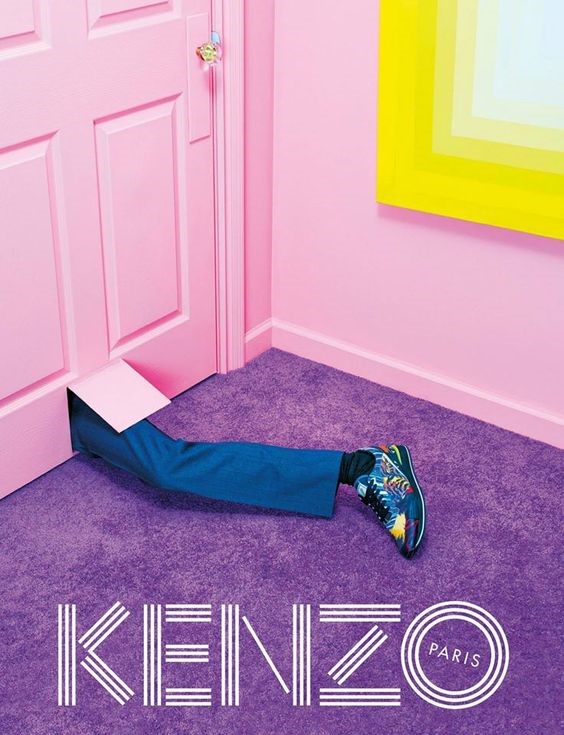
Cattelan & Ferrari, KENZO FW2014 (toiletpapermagine.org)
Maurizio Cattelan & Pierpaolo Ferrari
“We would like to evoke familiarity and disgust at the same time. We desire to bring seemingly normal situations to their very extreme”, says the provocative Italian photographic couple during an interview with Dazed and Confused. Cattelan is a contemporary artist and Ferrari is the photographer of this multi-tasking duo, who are also the founders of the biannual magazine Toiletpaper. They are more well-known for Kenzo’s surreal campaigns and their longstanding collaboration with MGSM.
Their breaking-down-the-rules-of-beauty and cheeky work have made appearances in fashion magazines such as W, New York Magazine, Vogue, Elle, and Dazed&Confused.
WORKOUT WEDNESDAYS: Spin Til You Sweat Playlist And Shopping Guide
Workout Wednesday - Spin Til You Sweat Playlist
If you're wanting to spin your butt off or just channel your inner Ariana Grande from the "Side to Side" music video, here's a playlist that will keep your legs moving, and dancing in your seat!
Don't forget to check out Pop Sugar's shopping guide that's made for all you spinners!
No Matter How You Spin It - You Need These Essentials For Indoor Cycling!
Indoor cycling and Spin classes are a mainstay at the gym, but specialized boutique studios like Flywheel Sports, SoulCycle, and Cyc are bringing the workout to more people than ever before. Regardless of where you choose to turn the wheel, you'll need the right gear.
Is the Fashion Industry Changing?
While social conditions change, fashion is trying to keep up with them. There’s a lot to be done, but some important moves have already been made.
VOGUE British May 2018 (cover)
The world is changing rapidly, and fashion is one of the sectors that need to adapt and demonstrate determination and consistency. Furthermore, like many other industries, the fashion world is now primarily influenced by social media, particularly Instagram. Thanks to this social media application, the increasing power of the “boy or girl next door” image is taking over. Even supermodels and celebrities seek to look like everyday people.
Since mass media influences the society around us, it would be inconceivable for it not to influence fashion. It seems that the previous limitations of age, size, race, and sex don’t play such an important role in the fashion industry anymore. Perhaps it is beginning to change slowly, but steadily, and accepting the diversity within it. Along with the aid of a few progressive designers who seek the approval of the consumers.
It’s worthwhile observing the last issue of British VOGUE (May 2018). Nine models, each in their own way, presented a different aspect of diversity in fashion. Introducing a bolder future of the industry. Showing that models are human beings encountered in everyday life and not just ethereal beings who could be found only in fairy tales and on catwalks. Finally, fashion is asking for more nonwhite, plus-size, trans, and mature models.
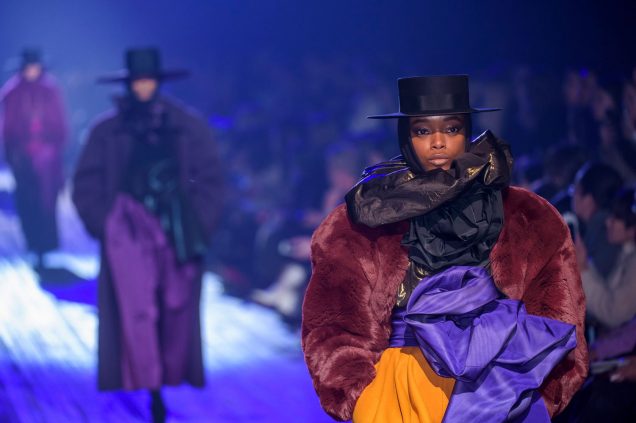
Olivia Anakwe at Marc Jacobs Fall 2018 (thefashionspot.com)
Racial, gender and sexual diversity have become more and more obvious in fashion shows and magazines. According to thefashionspot.com, during the Fall 2018 Fashion Week, more models of color walked the runway than ever before, and since Teddy Quinlivan came out last September, the number of transgender model castings in New York have jumped from 12 to 31.
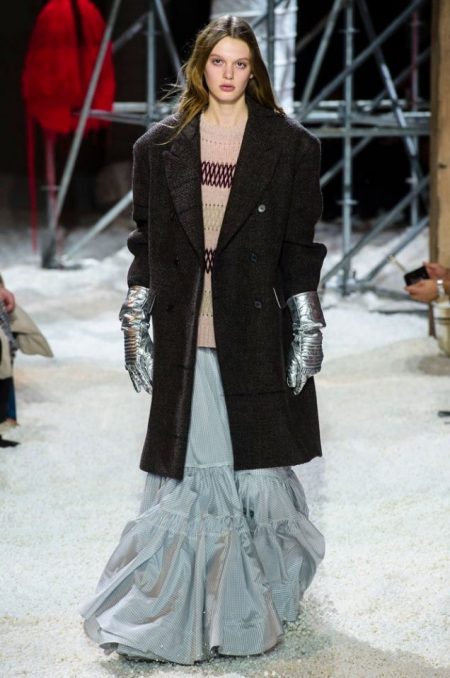
Ariel Murtagh at Calvin Klein Fall 2018 (thefashionspot.com)
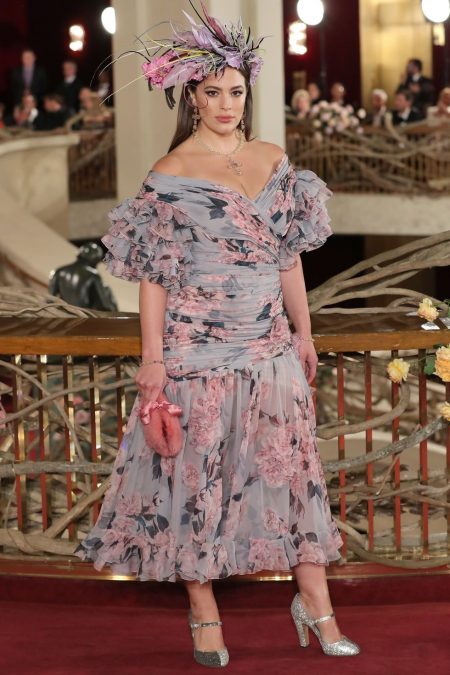
Ashley Graham Dolce&Gabbana AltaModa 2018 (harpersbazaar.com)
In a recent interview for WWD, Tom Ford highlights the fact that models have always been the same as the sample size that designers and fashion houses worked with, and he continued by saying that, “if they don’t fit the clothes, they don’t get the job.” But, the reality is now very far from what the designer states. The last few years have seen a rapid growth of the plus-size market, and the fashion industry knows very well what to do. Ashley Graham, Katy Syme, and Stella Duval are three of the top plus-size models who many luxury brands choose for their shows. Listening to the consumers’ needs is something that should be done by all brands.
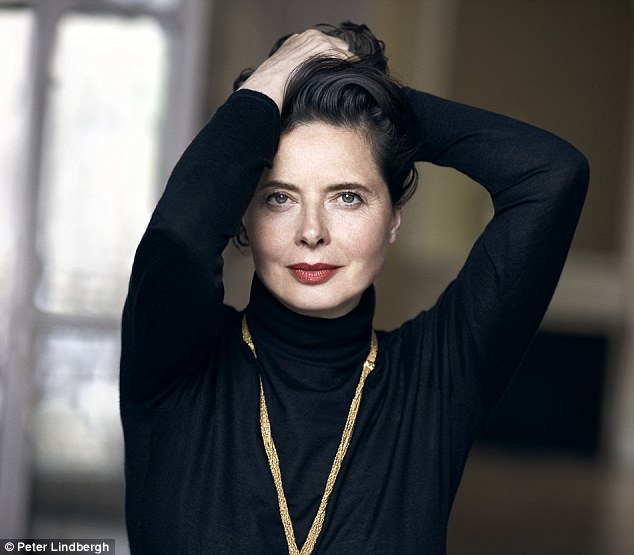
IsabellaRossellini (dailymail.co.uk)
At the age of 43, Isabella Rossellini lost her contract with the French luxury cosmetics house, Lancôme, only to regain it at the age of 63. While on the Skavlan Talkshow, Rossellini describes the new female CEO telling her that “Women felt excluded, they felt rejected. And we really want to change the communication and include all women. And define beauty differently than looking young”. In the movie Death Becomes Her (1992), Rossellini plays the mysterious, always-stay-young Lisle Von Rhuman. Her co-stars Meryl Streep and Goldie Hawn do anything to stay forever young and beautiful, but with a price. Is this what every woman desires to be? Forever young or forever herself? But, that’s another article to write. Now, at the age of 60 something, Rossellini looks more accessible to women in her age group. Believe it or not, beauty brands have turned a new page. Through their ads, they are not only promoting beauty, but also the spirit and the confidence a woman should have in order to look and feel beautiful. By hiring women in their mid-50s and 60s as faces of their beauty campaigns, they speak directly to the hearts of women a similar age.
Fashion is an integral part of our everyday life and its reflection. Social conditions and data are changing, and fashion must keep up in order to serve our needs. But, also respond appropriately to key questions that have arisen concerning the fashion industry.
What You Should Have In Your Model Bag
Whether you are a model running between castings and jobs every day, or you're just doing it on an occasional basis; have a designated model bag with the following essentials. You will be prepared for any modeling situation, and don't think the clients won't notice! Remember to also bring it with you when you go to your agency. This is in case you need to do some digis or meet a client last minute.
 WHAT MODELS SHOULD HAVE IN THEIR BAG.
WHAT MODELS SHOULD HAVE IN THEIR BAG. PORTFOLIO - Yes, this may be obvious, but you would be surprised by how many models forget their books!
PORTFOLIO - Yes, this may be obvious, but you would be surprised by how many models forget their books! UNDERWEAR- Women should have a matching set of seamless underwear. Including a strapless bra and thong. You can throw in a more 'pretty' or 'sexy' set for any lingerie style castings. Men should have fitted boxer-briefs, briefs, and a tank top as an undershirt. All items should be a solid color, in nude, white, black and grey.
UNDERWEAR- Women should have a matching set of seamless underwear. Including a strapless bra and thong. You can throw in a more 'pretty' or 'sexy' set for any lingerie style castings. Men should have fitted boxer-briefs, briefs, and a tank top as an undershirt. All items should be a solid color, in nude, white, black and grey. PEN & PAPER - Apart from general note taking, you may need to write down last minute important information, if you, the client, or the agent does not have access to text or email.
PEN & PAPER - Apart from general note taking, you may need to write down last minute important information, if you, the client, or the agent does not have access to text or email. COSMETICS- These include makeup remover, face and body moisturizer, and SPF. This is so you can remove makeup whenever needed, and keep your skin looking hydrated and healthy throughout the day.
COSMETICS- These include makeup remover, face and body moisturizer, and SPF. This is so you can remove makeup whenever needed, and keep your skin looking hydrated and healthy throughout the day. CHICKEN CUTLETS - Female models should have underwear accessories such as bra fillers 'chicken cutlets', pasties and bra straps. This is so the clothes can fall properly and avoid any bra peekaboo!
CHICKEN CUTLETS - Female models should have underwear accessories such as bra fillers 'chicken cutlets', pasties and bra straps. This is so the clothes can fall properly and avoid any bra peekaboo! HOSIERY & DRESS SOCKS - Women should have nude and black hose. Men should carry brown and black dress socks. Clients do not always provide these items but need them to complete a look.
HOSIERY & DRESS SOCKS - Women should have nude and black hose. Men should carry brown and black dress socks. Clients do not always provide these items but need them to complete a look. SWIMWEAR - Female models, in particular, should always have a bathing suit with them. Some clients might prefer that you wear this while measuring you or shooting digitals, rather than being in your underwear. And, it should always be a two-piece. Guys do not use bathing shorts as much, but it's good to keep in the bag just in case. Similarly to underwear, your bathing suit should be well fitted, a dark solid color, and in good condition.
SWIMWEAR - Female models, in particular, should always have a bathing suit with them. Some clients might prefer that you wear this while measuring you or shooting digitals, rather than being in your underwear. And, it should always be a two-piece. Guys do not use bathing shorts as much, but it's good to keep in the bag just in case. Similarly to underwear, your bathing suit should be well fitted, a dark solid color, and in good condition. ELECTRIC SHAVER - Especially for guys who are prone to the 5 o'clock shadow. If a client wants you looking the same way at 4 pm as you did at 9 am, you will need to give your face a once over. This will maintain consistency during the shoot, and you can do this right on the spot without cutting yourself. Also, there could be occasions when you are asked to arrive with a few days growth of facial hair, but then the client decides they want you clean shaven.
ELECTRIC SHAVER - Especially for guys who are prone to the 5 o'clock shadow. If a client wants you looking the same way at 4 pm as you did at 9 am, you will need to give your face a once over. This will maintain consistency during the shoot, and you can do this right on the spot without cutting yourself. Also, there could be occasions when you are asked to arrive with a few days growth of facial hair, but then the client decides they want you clean shaven. HAIRBRUSH & HAIR ACCESSORIES - Always carry a hairbrush and hairspray, gel, or whatever product you prefer, to keep your hair looking groomed throughout the day. If you have long hair, you should also have hair ties and kirby grips to pull it back.
HAIRBRUSH & HAIR ACCESSORIES - Always carry a hairbrush and hairspray, gel, or whatever product you prefer, to keep your hair looking groomed throughout the day. If you have long hair, you should also have hair ties and kirby grips to pull it back. FACE & BODY WIPES - Aside from cleaning your hands while on a lunch break during a location shoot, they are also great for wiping off makeup both on your face and body. Additionally, they work wonders for your underarms, when you can't apply deodorant due to wearing your client's clothes.
FACE & BODY WIPES - Aside from cleaning your hands while on a lunch break during a location shoot, they are also great for wiping off makeup both on your face and body. Additionally, they work wonders for your underarms, when you can't apply deodorant due to wearing your client's clothes. LINT ROLLER - You'd be amazed by how many models walk around with lint all over their black clothes.
LINT ROLLER - You'd be amazed by how many models walk around with lint all over their black clothes. MAKEUP & MAKEUP BRUSHES - This is for any touchups needed while on a booking without a makeup artist on set. However, if there is a makeup artist, this will come in handy should you be allergic to the products. Lastly, you will be able to apply or readjust makeup in between castings and bookings.
MAKEUP & MAKEUP BRUSHES - This is for any touchups needed while on a booking without a makeup artist on set. However, if there is a makeup artist, this will come in handy should you be allergic to the products. Lastly, you will be able to apply or readjust makeup in between castings and bookings. MANICURE KIT & CLEAR NAIL POLISH - You never know when you might break a nail! For all bookings, models are required to have neat and tidy nails. Sometimes the client might request that your nails be a certain length or shape. Unless you are expected to have an elaborate mani, it is unlikely that there will be a manicurist on set, so be prepared to do it yourself. Also, clear nail polish works great when applied on to snags in hosiery, to prevent them from running and getting larger.
MANICURE KIT & CLEAR NAIL POLISH - You never know when you might break a nail! For all bookings, models are required to have neat and tidy nails. Sometimes the client might request that your nails be a certain length or shape. Unless you are expected to have an elaborate mani, it is unlikely that there will be a manicurist on set, so be prepared to do it yourself. Also, clear nail polish works great when applied on to snags in hosiery, to prevent them from running and getting larger. TRAVEL SEWING KIT - For any wardrobe malfunctions during castings and bookings.
TRAVEL SEWING KIT - For any wardrobe malfunctions during castings and bookings. SHOES - Although you will most likely have a whole other bag full of shoes to take with you to bookings, you should also throw a pair or two into your model bag, suitable for last minute castings or digis.
SHOES - Although you will most likely have a whole other bag full of shoes to take with you to bookings, you should also throw a pair or two into your model bag, suitable for last minute castings or digis. WATER & SNACKS- For when you don't have time to pick up food in between castings and bookings, or if the catering is not your cup of tea. It's important to keep your energy and sugar levels well regulated.
WATER & SNACKS- For when you don't have time to pick up food in between castings and bookings, or if the catering is not your cup of tea. It's important to keep your energy and sugar levels well regulated. PHONE & WALLET - Just DON'T leave home without them! And, remember to charge your phone.
PHONE & WALLET - Just DON'T leave home without them! And, remember to charge your phone. MAP OR PRINTED DIRECTIONS - In case your phone gets flat and you can't charge it, or you have bad reception, it's always good to have a backup for locating where your bookings and appointments are.
MAP OR PRINTED DIRECTIONS - In case your phone gets flat and you can't charge it, or you have bad reception, it's always good to have a backup for locating where your bookings and appointments are.
Model Talk: Sarah Gullixson Talks New York and Getting Scouted at a Vogue Event
Model Talk with Sarah Gullixson.
Sarah Gullixson, who was scouted while attending a Vogue fashion show in Northern California, gets cozy in the model apartment for some model talk. The red-headed beauty tells us about her first trip to New York, and what keeps her motivated – and from the sound of things, you may find her running a big glossy fashion magazine one day!
Grandmasters of Fashion
Lately, the fashion scene looks like a chess game. Who will make the smartest next move?
Alexander McQueen Spring 2005 Fashion Show (marieclaire.co.uk)
Within the last few months, there has been intense mobility in the fashion world. Designers have come and gone from one fashion house to another. Some others preferred to split from the luxury group they once used to be under. Everyone is moving like pawns in a chess game.
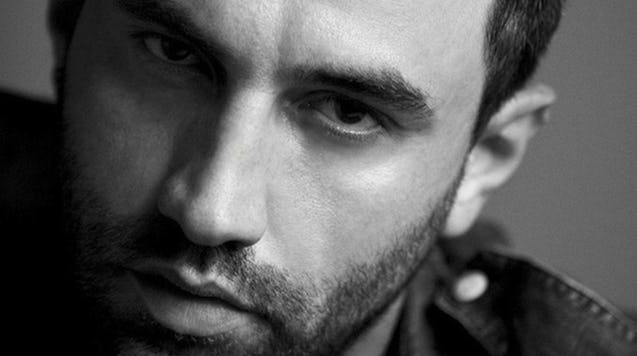
Riccardo Tisci | Photo- Inez and Vinoodh (BoF)
The first move was made by Riccardo Tisci and Burberry. In early March, the British luxury brand announced that Riccardo Tisci would be the new Creative Officer. Tisci succeeded Christopher Bailey who after 17 years decided to leave the company.
“Riccardo is one of the most talented designers of our time. His designs have an elegance that is contemporary and his skill in blending streetwear with high fashion is highly relevant to today’s luxury consumer. Riccardo’s creative vision will reinforce the ambitions we have for Burberry and position the brand firmly in luxury,” said Marco Gobetti, Burberry’s chief executive.
“I have an enormous respect for Burberry’s British heritage and global appeal and I am excited about the potential of this exceptional brand, I am honored and delighted to be joining Burberry and reuniting with Marco Gobbetti,” said Tisci.
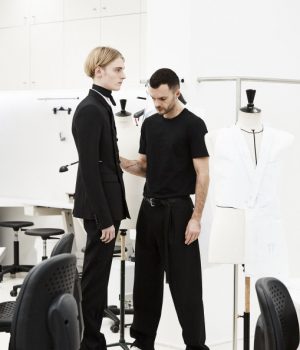
Kris Van Assche gets studious in the Dior Homme studio. (WWD)
The next strategic move was made by Dior Homme as Kris Van Assche exited after 11 years at the brand but he’ll take up a new role within the LVMH Group, according to WWD. Kim Jones will undertake the duty of artistic director for Dior Homme, and according to sources, he will present his first collection in June 2018.
“I am deeply honored to join the house of Dior, a symbol of the ultimate elegance,” said Jones.
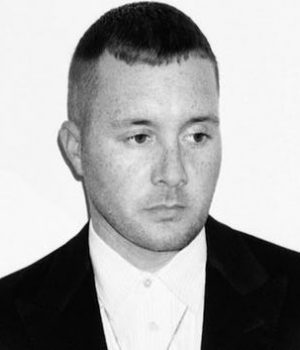
Kim Jones (BoF)
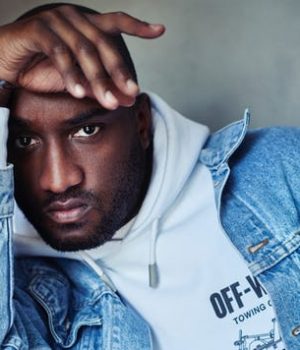
Virgil Abloh (BoF)
And as Kim Jones moved to the Dior team, it was Louis Vuitton’s turn to shake things up. Virgil Abloh will now be the new artistic director of Louis Vuitton menswear. The founder of the haute streetwear brand Off-White and Kanye West’s longtime creative director announced that he feels honored in accepting that position. He finds that the house’s heritage and creative integrity are the main key inspirations. So, his main goal would be to present them alongside with nowadays.
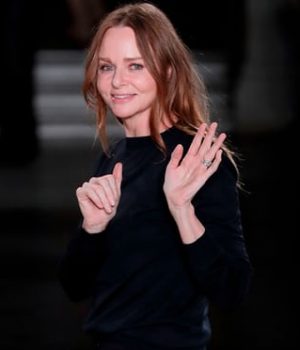
StellaMcCartney (the guardian.com)
After 17 years in a joint venture with the luxury goods group, Kering, Stella McCartney decided to make a very smart move and buy Kering’s 50% stake in her fashion label. “It is the right moment to acquire the full control of the company bearing my name,” said the designer. Rumour has it that Sir Paul McCartney has helped her financially to get the Kering’s share.
This chess game is not over, yet.





